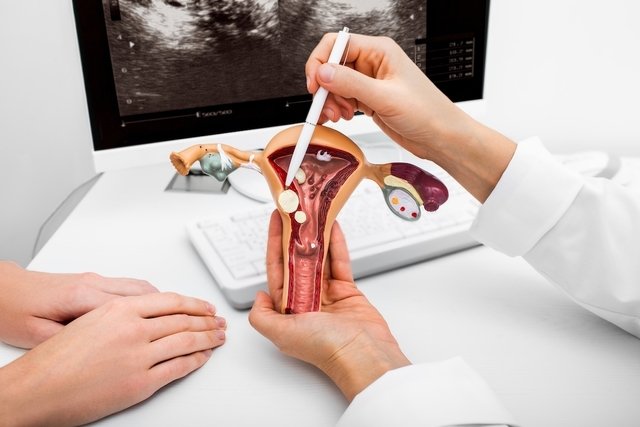Skene's glands are small glands located adjacent to the woman's urethra, close to the entrance to the vagina. They are responsible for releasing a white or transparent fluid that is released during sex.
The development of the Skene's glands can vary between women, so in some women it may be more difficult to stimulate this gland to release fluid.
In some cases, Skene's glands can become obstructed and fluid may accumulate inside. This can lead to inflammation and the formation of a cyst, that requires treatment with anti-inflammatories or surgery.

What are Skene's glands for?
The Skene's gland is responsible for producing and releasing a transparent or white viscous liquid through the urethra during sex when the glands are stimulated. They are often associated with female ejaculation.
This fluid has no relation to vaginal lubrication, because lubrication occurs before orgasm and is produced by the Bartholin glands, while ejaculation occurs at the climax of intimate contact and the liquid is released through the urethral canal.
Also recommended: Discharge Colors: What They Mean & How To Treat Them tuasaude.com/en/vaginal-dischargeSymptoms of inflammation
Inflammation of the Skene's gland can occur due to an obstruction of the gland's canals, which causes the fluid to accumulate instead of being released. This built-up fluid can form a cyst, which causes symptoms such as:
- Constant pain when urinating
- Vaginal swelling
- Small nodule near the urethra.
In most cases, the Skene gland cyst is less than 1 cm in size and symptoms are mild. However, large cysts can lead to the above symptoms and even obstruct the urethra, making it difficult to urinate.
The symptoms of this type of cyst can also be confused with a urinary tract infection. Therefore, whenever any type of persistent pain or discomfort appears in the vaginal area, it is very important to consult a gynecologist for assessment and treatment as necessary.
In addition to swelling, the cyst can become infected, leading to an abscess. These typically contain pus and are related to the presence of Trichomonas vaginalis, which causes trichomoniasis infections. Large, infected cysts can lead to symptoms like a fever, pain during sex, discomfort when sitting, walking and urinating, a lump in the vagina, pus and a UTI.
Also recommended: Vaginal Pain: 9 Common Causes & What to Do tuasaude.com/en/vaginal-painTreatment options
Treatment for a Skene's gland cyst should be directed by a gynecologist, but generally involves the use of analgesics and anti-inflammatories, such as ibuprofen or acetaminophen, to relieve pain and reduce swelling. If there are signs of infection, the doctor may also prescribe antibiotics, such as amoxicillin, as well as drain the pus from the cyst.
Also recommended: Vaginal Cyst: Symptoms, Causes, Tyes & How to Get Rid Of It tuasaude.com/en/vaginal-cystIn more serious cases, where it is not possible to relieve symptoms with medication alone, the gynecologist may advise surgical removal of the Skene's gland.
